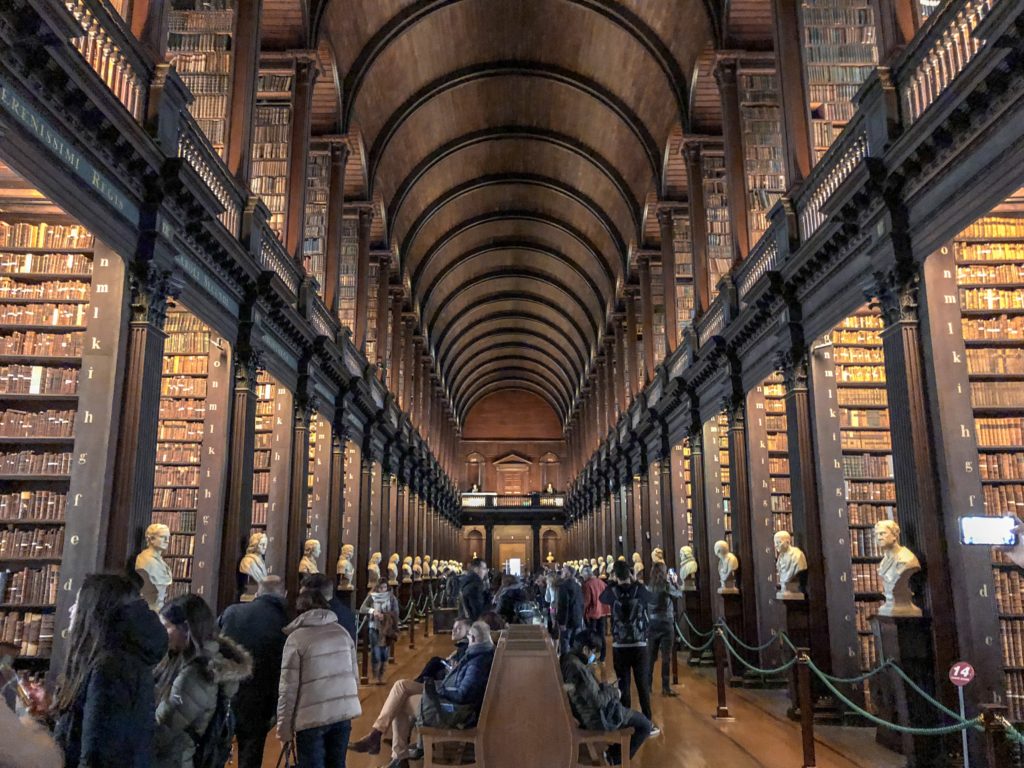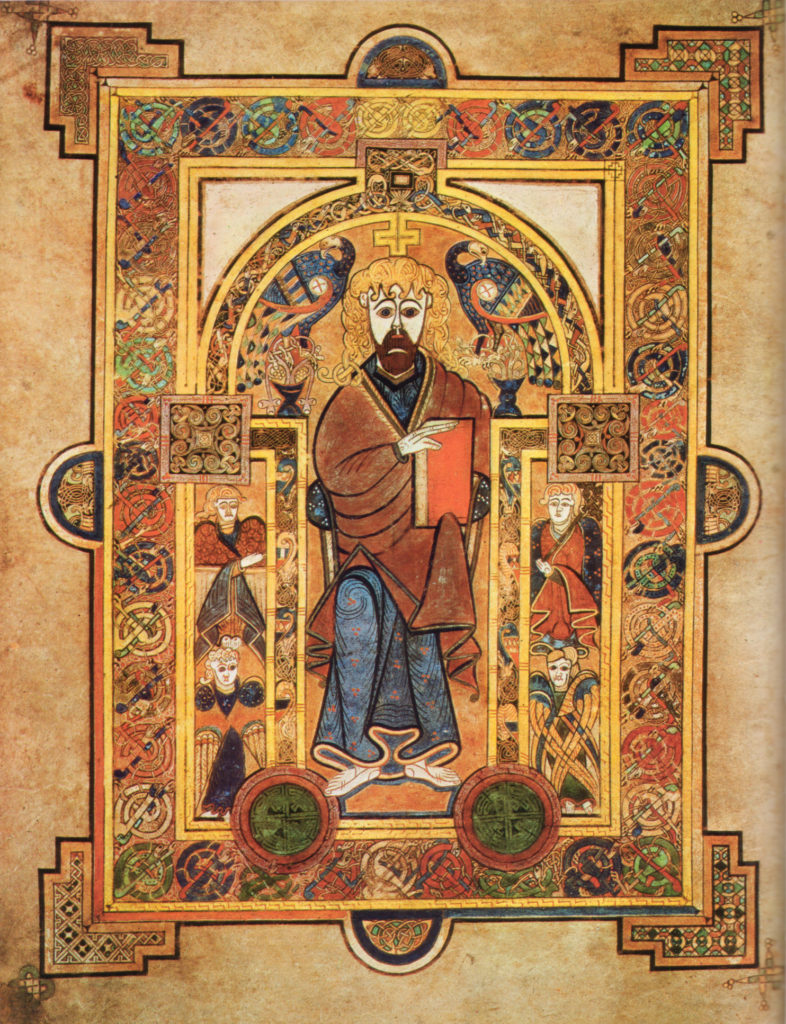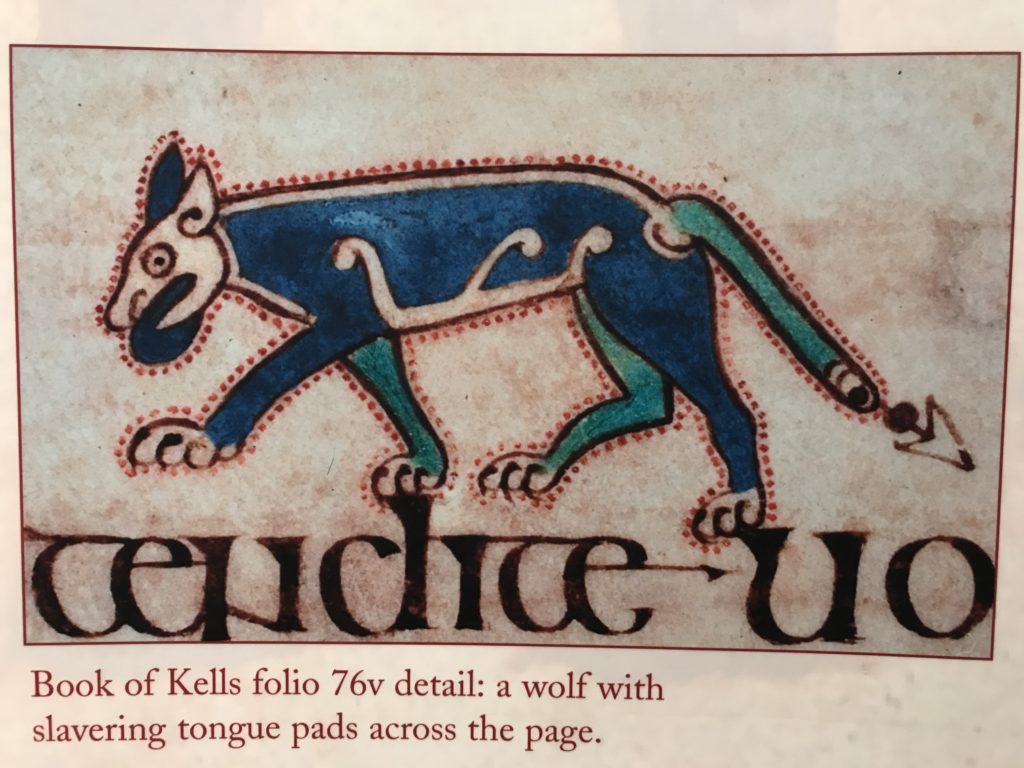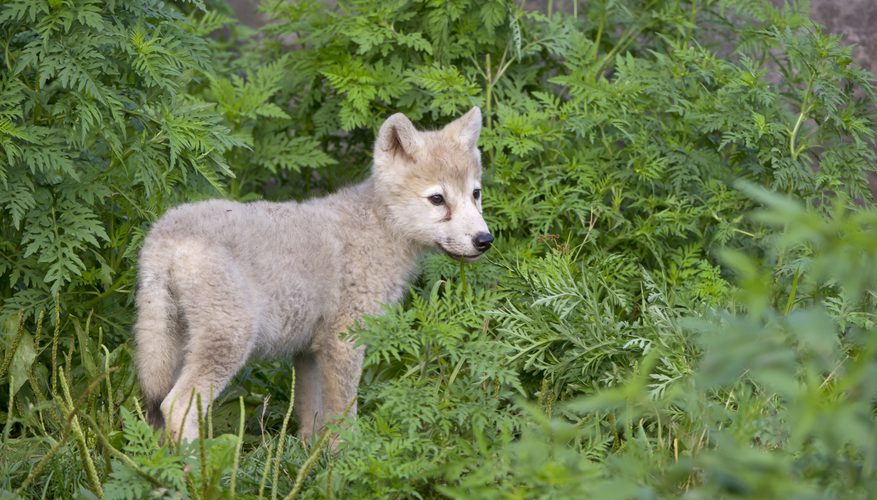Ireland is known for many things in historical and popular culture but did you know it was once so well known for its wolves that it was nicknamed “wolf land”?
The following is a story of legend, betrayal and murder of the last wolf of Ireland that all begins with a visit to Trinity College.
We visit a national treasure
The Library of Trinity College Dublin is breath-taking! It was established in 1592, is Ireland’s oldest library and has Legal Deposit privileges which means all published works in Ireland and UK must provide a copy to the library for its collection. To sum it up, it looks like the library in Hogwarts and at any moment Harry Potter is going to pop out from behind a shelf and cast a spell.

On display in the library is one of Ireland’s national treasures, The Book of Kells. It’s a medieval manuscript from the 9th century of the four gospels of the new testament that is composed of 340 folios (Latin for pages) made of calf vellum (calf skin) and written in Latin.

When Chris and I visited the Library and saw the book, the first thing I noticed was the amazing and colourful sketches. One image that really caught my eye was that of the Blue Wolf.

The true Son of Ireland
Now people who know me might think my spirit animal is the bear due to my appearance and amazing hugs but I’ve always been drawn to the company of canines. The image of the Blue Wolf was stuck in my mind and I began to wonder why it was included in the book of Kells so I began to research. I found out the Irish word for wolf is Mac Tíre meaning literally the son of the country(side), son of the land and that Ireland was once so well-known for its wolf packs that it was nicknamed “Wolf Land”.
Wolves had been part of the ecosystem of Ireland for many millennia with the earliest known evidence of an Irish Wolf being in North Cork where, during an archaeological excavation in Castlewood cave near Mallow the remains of a Wolf dating to 34,000 BC were found.
Up until recent centuries, wolves had been a longstanding part of Irish history and culture.
Irish Folklore tells of The Great Queen, wife of the Good God that could take form of a red-furred wolf and that Priest encountered a talking wolf, which revealed itself to be a cursed man of Ossory (Kilkenny and Laois).
Danger loomed for the Irish Wolf
Although a cherished animal of Irish folklore, legislation led by British rule was first introduced in 1584 to cull the Wolf population. The British, being unwilling to arm Irishman with guns to be set free across the country and fearing rebellion, chose instead to import their own wolf hunters from Britain. They enticed by the large bounties placed on Wolves of a £6 bounty for a female Wolf, £5 for a male and £2 for cubs.
Having at one point peaked in population of up to 1,000, with a hunting team of up to 128 men and 768 hounds, the Irish wolf stood little chance.
After centuries of diminishing the population, the last wild wolf in Ireland is said to have been killed in 1786, on the slopes of Mount Leinster in County Carlow.
Loss fuels inspiration
Learning of the wolf’s demise also reminded me of our home island province in Newfoundland, Canada because we also had a wolf that became extinct even more recently in the 1920’s. With all this newfound knowledge, I was inspired to write a poem inspired by the image of the Blue Wolf and the story of the last wolf in Ireland told from the perspective of Mother Ireland.
It’s called “mo mac gorm” or “My Blue Son”.
My blue son upon me did roam,
His steps plentiful,
His gaze serine,
Dominant and obedient.
My blue son sparked tales,
Transforming under full moon,
Devouring on battlefields
Attacking unprovoked.
He kept me balanced,
Others did not understand,
Others wanted him removed,
Erased from now and future.
The Others are coming,
They will not stop,
Do they know you are the last?
RUN BLUE SON!
I no longer feel your steps,
Have hounds ravaged and men bound you?
Or have you hidden so not even I can see?
Oh, my son.
Time has taken its toll,
My green has turned to grey,
But I still have strength to welcome you,
When you appear once more,
My Blue Son.
But all hope may not be lost for the wolf being able to call Ireland home once again.
The return of the Irish wolf?
Wolves are an apex predator and apex predators are known to create balance in an ecosystem. Because of this, the Hibernian Organisation of Wolves in the Landscape (H.O.W.L) proposes a small-scale re-introduction of wolves to Ireland with a pilot programme in Wicklow National Park.
This is still in discussion.
We can only hope that the original son of the land will once more be embraced by Ireland and its people.
For more from us on living in Ireland, Irish traditions, travel stories, advice and global opinions give us a follow on:
YouTube – Subscribe Here
Instagram – @GaysAroundTheBay
Email – Submit your email in the subscription box
Thanks guys!
Larry and Chris











